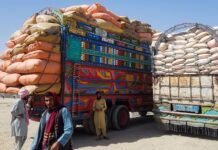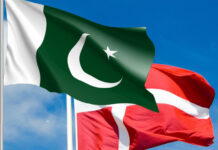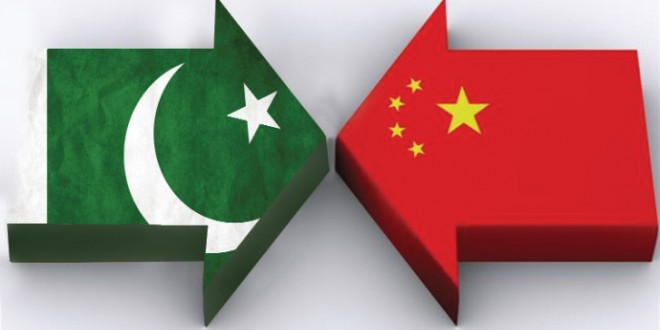BY: Muhammad Muzammil Zia & Ismail Pirzada, Centre of Excellence for China-Pakistan Economic Corridor, (CoE-CPEC)
LAHORE
Since the independence of Pakistan, the South Asian drive and appreciation of occupational niches and resultant prestige has continued to render a distinguished cadre of educated professionals within a variety of fields, whether it be medicine, engineering, legal affairs, and the bureaucracy. However, as cracks began to appear in the country’s methods relating to meritocracy in the workplace and in regards to educational attainment, lessened social mobility seemed to define the exigence of the mass migration of skilled and non-skilled Pakistanis abroad. Whether it be for higher education, increased remuneration, or the mere opportunity of participating in the workforce on a level playing field, more than eight million Pakistanis now find themselves as having a permanent presence in foreign nations in some manner, with an upwards of two-thirds of Pakistanis wishing to do the same as per Gallup polling. Amongst them are a plethora of extremely qualified personnel, many of whom were initially trained domestically within Pakistan itself. The loss of such a cadre has meant that Pakistan continues to lag behind internationally-recognized standards and practices in various disciplines, coupled alongside a stagnation of the education system as the nation’s brightest prefer refuge abroad to practice whatever it is they may have learned indigenously.
Human resource development within Pakistan simply cannot take place if the appropriate expertise and willingness is not present to begin with. The introduction of broad infrastructural and economic reforms as triggered by the China-Pakistan Economic Corridor (CPEC) provides Pakistan with a clear-cut opportunity to halt the country’s long-standing tradition of brain drain – and perhaps even reverse it should the long-term benefits of the corridor begin to bear fruit in 2030. As Pakistan’s manufacturing output capability begins to expand under CPEC, diasporic Pakistani engineers, scientists, and technicians may serve as the golden egg by which a complete transfer of technology can take place once Chinese upper-managerial roles begin to filter out as CPEC projects begin to be fully self-sustainable by local citizens. Diasporic Pakistani science and engineering personnel’s understanding and experiences of what drives innovation in developed states enables them to function as the crux of indigenous control and operation of Pakistan’s industrial units, whether they be through Chinese-built Special Economic Zones or induced manufacturing once the country’s crippled state of energy provision is rectified.
Structural deterioration in Pakistan’s economy is also linked to the phenomenon of brain drain, as the country maintains a default state of reliance in remittance inflows in the absence of any other noteworthy foreign exchange. Such remittance levels have already begun to sink amidst tighter regulations on foreign residency for Pakistanis earning incomes in the oil-rich states of the Gulf Cooperation Council, whose newly-rendered paths towards fiscal conservatism has meant a steady exodus of Pakistanis who previously sent financial resources back towards Pakistan and in turn spurred consumption in the latter. In addition, diasporic Pakistani professionals should also be the primary target of bridging the gap between educational and training standards abroad and those found within Pakistan. Far from being mere cultural liaisons, such individuals can operate within a Pakistani context with ease while disseminating international, established standards for the conducting of basic human resource development in Pakistan which is required for CPEC-oriented projects to flourish once they are fully staffed and administered by Pakistanis themselves. Such activity also allows for the Pakistani economy to rid itself of a severe, unhealthy inclination towards remittance collection as the individuals who once contributed to foreign exchange inflows would now be enabling the progression of Pakistan into a middle-income state via the contribution of their expertise. This effect will be compounded by the notion that blue-collar staff abroad solely for the sake of labour-oriented work will also return to Pakistan as the induced employment via CPEC funding corrects the very lack of opportunity that triggered their departures initially.
If Pakistan is to successfully transition into the middle-income, industrialized state it seeks under the supervision and supplementation of CPEC projects, it is critical that she adopt international standards relating to white-collar work ethic and industrial operations relating to efficiency, safety, and management. The culture of a lack of productivity bred from a lack of punctuality, a lack of meritocratic hiring, and an indifferent attitude towards the most basic of tasks all need to be shed for the sake of achieving the sort of desired output Asian “tiger” economies such as South Korea have undergone in their progression. Diasporic Pakistani personnel already have prior-gained exposure to modern practices in the art of human resources, project planning and implementation, and the base modus operandi required to serve as a productive employee in an office space, while their foreign credentials allow them to rise to upper-management and begin a wider cultural shift in how the average Pakistani firm, no matter how large or small, functions. This net can be widened to even blue-collar Pakistani labourers who, albeit their harsh conditions in states where their labour rights may be compromised, are given stringent fixed schedules and timeframes to follow.
CPEC projects in themselves also allow for a reassessment of what it means for young Pakistani men and women to study abroad. As of now, many individuals go abroad on their own accord or via the use of scholarships from the Higher Education Commission (HEC) in exchange of signed bonds committing them to working within Pakistan upon returning. If the cultural exchange component of CPEC is to be fully realized, China’s surge in academia-related reputation serves as the primary platform by which Pakistanis can refine their skills at foreign Chinese universities with the maintenance and management of CPEC projects serving as their exigence for returning home. Such a program would be similar in nature to how the monarchies of the Arabian Gulf send indigenous human resources abroad in order to cultivate a talented pool of professionals to run their local state-owned petroleum and gas industries. The economic and social depravity that has led to such colossal brain drain out of Pakistan may see itself diminishing with the advent of CPEC funding, however, appropriate policy measures must be taken in order to maximize the potential of Pakistani human resources abroad who currently contribute to states other than Pakistan itself.
























